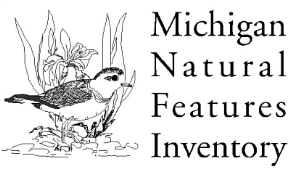Michigan Natural Features Inventory program highlights Michigan’s Great Lakes Coastal region
Imperiled communities discussion includes lakeplain prairies, oak savannas, dune complexes, and Great Lakes marshes.

Michigan Natural Features Inventory (MNFI), an important program of Michigan State University Extension, offers a suite of high quality resources that can help those interested in and actively working to conserve Michigan’s biodiversity. MNFI’s mission is “to deliver the highest quality information that contributes to the conservation of biodiversity, especially rare and declining plants and animals and the diversity of ecosystems native to Michigan.” Since 1979, MNFI has developed, maintained and managed the only statewide biological and conservation database on rare plants and animals in Michigan. Federal, state, local and private agencies use this data to guide decisions related to land management, development and conservation.
On Dec. 16, 2015, MNFI ecologists Josh Cohen and Brad Slaughter will present a program featuring the natural features of Michigan’s Great Lakes Coastal region. The program will held from 10 a.m. to noon in the Administrative Commons Area of the Tribal Government Offices of the Little Traverse Bay Bands of Odawa Indians, Harbor Springs. Those interested in attending this program are asked to RSVP for the program at cohenj@msu.edu or slaught14@msu.edu.
This program features the survey work Cohen and Slaughter conducted throughout Michigan’s coastal region in 2015 to document areas of significant ecological importance. Examples of imperiled coastal region communities surveyed include lakeplain prairies, oak savannas, dune complexes, and Great Lakes marshes. The goal of this work was to collect information on the ecological integrity of coastal region remnant natural areas that can provide decision makers (stakeholders such as land trusts, local and state governments to name a few) with direction needed in the conservation and management of these specific remnant natural communities.
Detailed community abstracts for these natural areas are available at the Michigan Natural Features Inventory’s web site. In addition, a report is available on the classifications and descriptions of Michigan’s natural communities along with community distribution maps.
If you are unable to attend this program, a great resource to pick up just in time for the holidays to learn about the natural communities that make up the Great Lakes coastal region as well as all other communities in Michig
an is the “Field Guide to the Natural Communities of Michigan,“ which was published by the Michigan State University Press in late 2014. This resource is an incredible tool that helps anyone, from someone with limited ecological experience to a professional scientist, interpret the unique biodiversity of Michigan’s landscape. The field guide presents a framework for dividing the natural world into easy-to-understand and describable components called natural communities. Included in this guidebook are distribution maps, photographs, and lists of characteristic plant species that help to define each natural community.
Readers may also enjoy several additional types of information included in this guidebook:
- Suggested places individuals can visit to gain a more in-depth experience of a particular natural community.
- Glossary of ecological terms to help decipher and gain a more comprehensive understanding of each natural community.
- Dichotomous keys to help readers identify natural communities in the field and learn about the critical factors that distinguish the natural community types.

This guidebook is the culmination of three decades of work by ecologists with Michigan Natural Features Inventory. Authors of the guidebook include Joshua G. Cohen, Lead Ecologist for MNFI, Bradford S. Slaughter, MNFI’s Lead Botanist, Michael A. Kost, and Dennis A. Albert. Kost was the Lead Ecologist for MNFI from 2004-2012 and currently serves as the Native Plants Specialist with Matthaei Botanical Gardens and Nichols Arboretum of the University of Michigan. Albert was the Lead Ecologist with MNFI from 1987- 2004, and is now on faculty with the Department of Horticulture at Oregon State University.
This guidebook can be purchased from the Michigan State University Press. For more information, visit the MSU Extension’s Natural Resources page.



 Print
Print Email
Email




